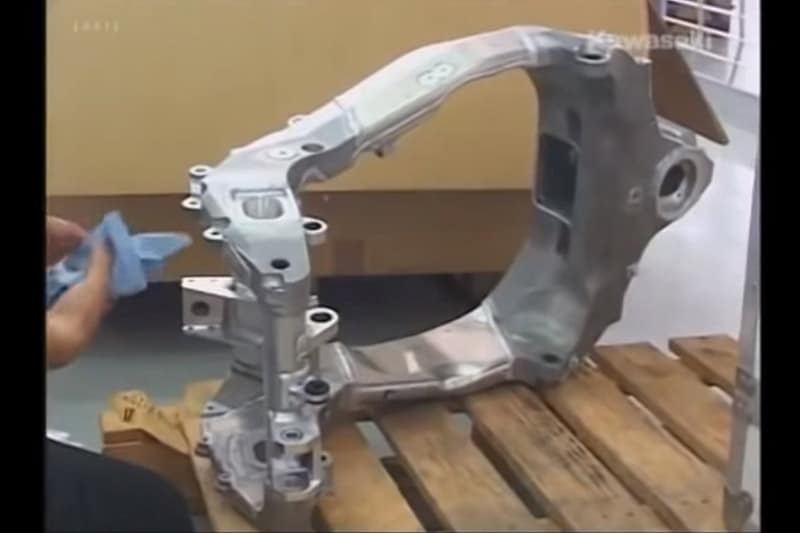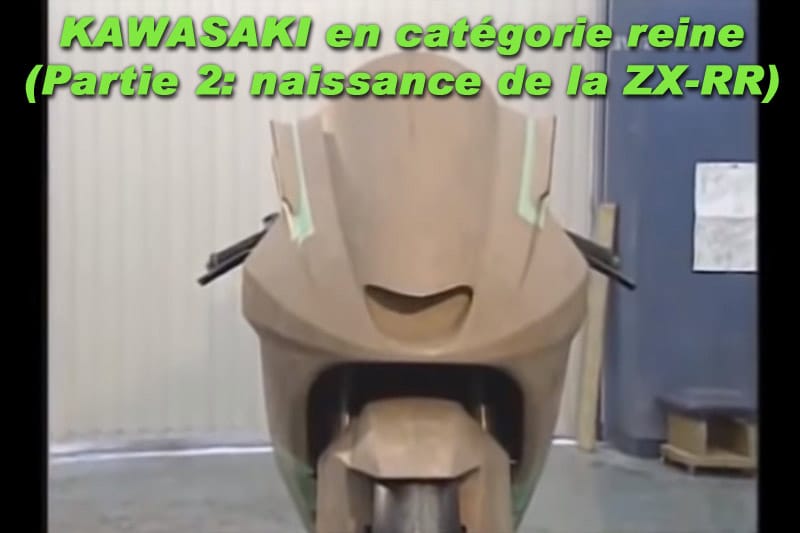We regularly read (with regret) that Kawasaki will not return to the premier Grand Prix category. The Japanese brand has, however, been active there twice, and you know the proverb…
However, his career in GP500 then in MotoGP does not argue in favor of a return, despite some really very interesting elements.
After the first chapter on the KR500, we therefore invite you to revisit these green years in MotoGP.
2/ The genesis of the Kawasaki Ninja ZX-RR MotoGP
We have unearthed for you an exceptional document concerning the genesis of the ZX-RR MotoGP, produced by Kawasaki themselves. For those who are at odds with the language of Shakespeare, we summarize the facts below the video…
The MotoGP Kawasaki project was launched on December 1, 2001 with a reduced team of 12 people.
We begin to collect data with a machine derived from the series and we create a clay model which we pass through a wind tunnel at more than 300 km/h (note the aerodynamics already evolved to provide support, even if the fins in the cover photo have disappeared…).
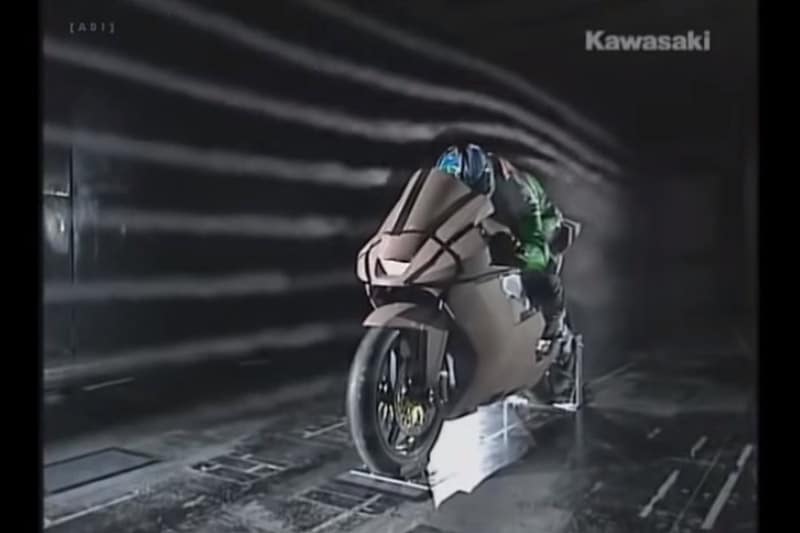
We then test this bodywork on the track.
For MotoGP, we retain the in-line 4-cylinder architecture. Also note the location of the alternator behind the cylinders, just like on the Yamaha M1…
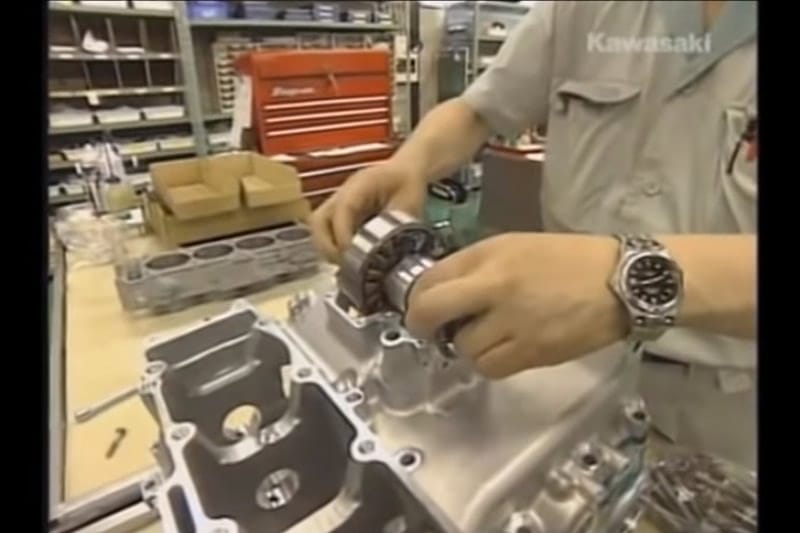
The engine was started on the bench in August and immediately produced more than 200 horsepower.
On September 9, 2002, two Ninja ZX-RRs rolled to perform the shakedown at the hands of Akira Yanagawa, on the Autopolis circuit, located on the island of Kyushu, in the south of Japan (Kawasaki finally bought this circuit in 2005 but we will come back to that…).
10 months after the launch of the project, the motorcycle was officially presented on October 4, 2002 in Motegi, as a prelude to the Pacific Grand Prix.
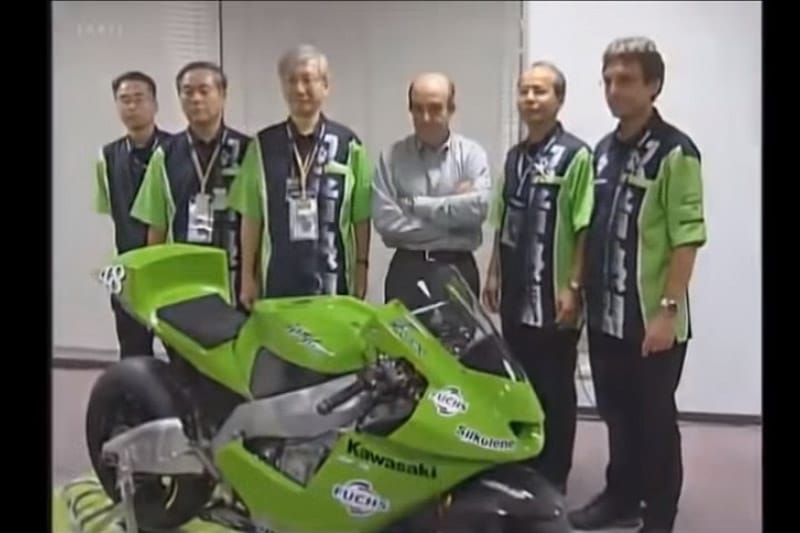
The video does not talk about it but the team manager function is then occupied by Harald Eckl, ex-350cc then 250cc rider without much record before creating his own team in 1994 in 125cc under the name “Marlboro Aprilia Eckl”, then working for Kawasaki from 1997 as team manager of the Supersport and Superbike structures.
In a press release, Kawasaki informs that they considered many different engine configurations for their first MotoGP and chose an inline 4-cylinder configuration for its "many technical advantages", including evenly spaced ignitions which make tuning easier. of intake and exhaust and provides perfect primary balance eliminating the need to balance the engine, more space to accommodate the long exhaust system required and the fact that the "compact cylinder head makes mounting easier in a frame ".
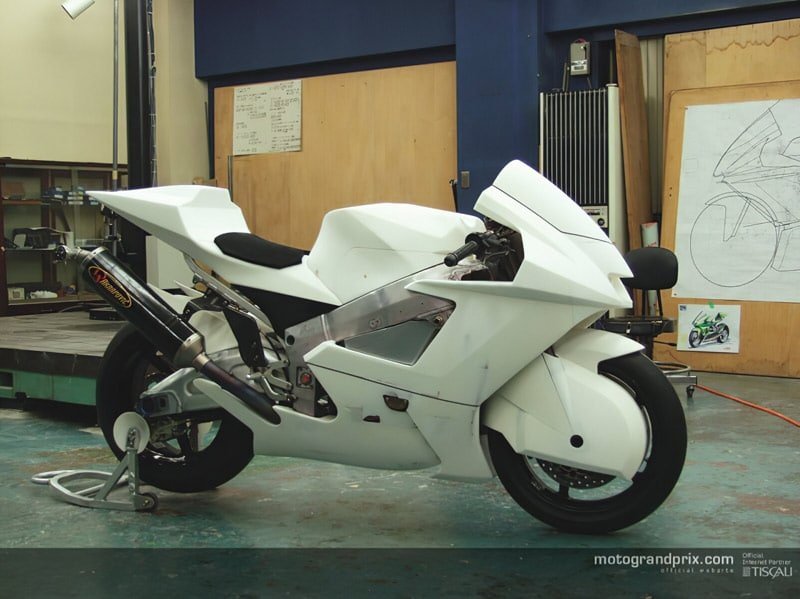 Prototype
Prototype
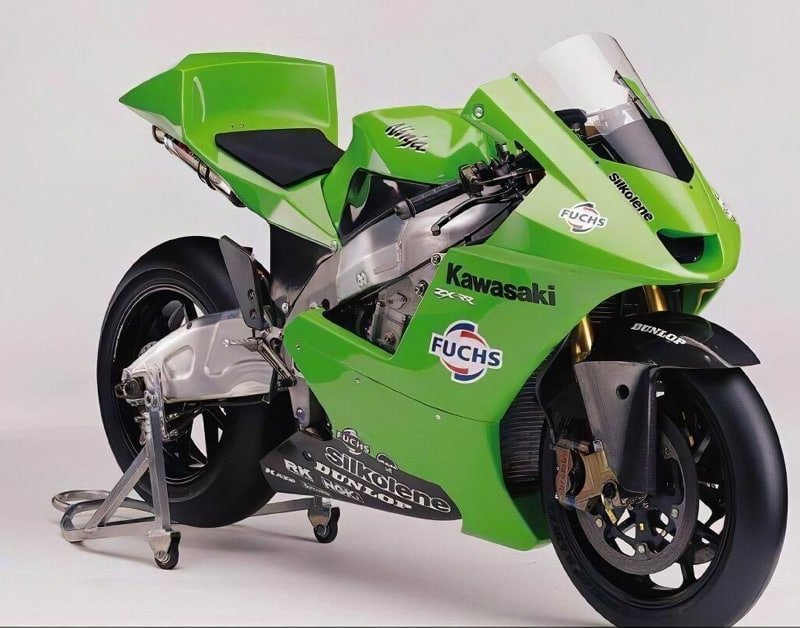
Framework is the second area highlighted in the report. Kawasaki engineers believe that improved casting methods and the use of the best materials available will allow them to give the Ninja ZX-RR a lightweight yet strong frame. With a computer-generated image, the guys from Kawasaki show that they intend to use a new thin-wall casting technique in the swingarm pivot areas and steering column of the frame. The image also shows that Kawasaki engineers chose to feed air to the new engine through a single ram air intake.
The Ninja ZX-RR uses a new Keihin FCR-i fuel injection system that uses slides in the injection bodies rather than butterflies. Kawasaki engineers say that since the slide retracts completely out of the air/fuel flow, it's better than a throttle that stays in the intake path at full throttle opening. A small, high-speed generator driven by the clutch gear provides the electrical power needed to operate the new EFI system.
The ZX-RR is still driven by Akira Yanagawa and, with number 48, qualified in 18th position out of 22, just 2 seconds behind the poleman Loris Capirossi on Honda.
Unfortunately, while he had moved up to 15th place, the Japanese driver suffered a highside on the 7th lap and had to retire.
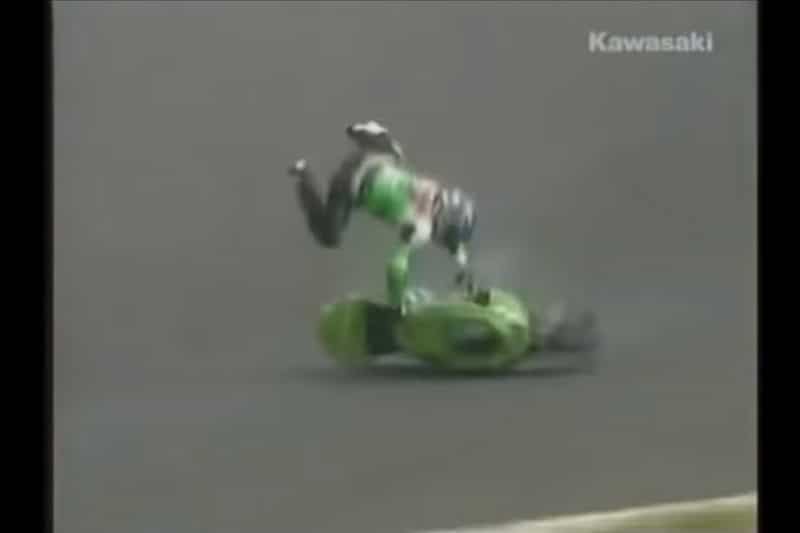
After this first attempt, the video obscures the following races with Andrew Pitt, the reigning Supersport champion called in as reinforcements by Harald Eckl to replace the injured Japanese pilot.
Andrew Pitt: “Obviously, the bike is much more powerful than what I'm used to and I had trouble keeping the front wheel on the ground! The other drivers know the circuit, while I still have to find my lines. I improved at the end of the session, but I need to enter the corners more quickly and also improve on the exit. My goal is obviously to ride with Kawasaki in 2003, and I hope this weekend will give me a chance."
He will finish 19th and last at Sepang, 17th at Phillip Island and 12th at Valencia.
Regis Laconi et Gary McCoy will test the bike after the last Grand Prix in Valencia then, during the winter, the bike sees its engine, exhausts and wheels modified before carrying out a private test at Suzuka in November with Andrew Pitt, While Akira Yanagawa sees himself demoted to the role of development pilot.
The ZX-RR “benefits” from Dunlop tires specially designed for it but not at the level of the competition.
In January 2003, in Sepang, Gary McCoy supports development, three months before the start of the season: “It's the first time I've really tested the bike, apart from the few laps I completed after the Valencia race, and there's still a lot to sort out. I need to find my feet and make some adjustments to be comfortable, I think it will take time. Obviously, the new Kawasaki 4-stroke is very different from the 2-stroke. It accelerates much harder, but progressively, less violently than the 2-stroke, and so you don't have the impression that it is as fast. When cornering, it's a little more difficult, especially with the clutch, which you don't use on a 2-stroke. To attack a corner with a 2-stroke, you have to use the braking, while with the 4-stroke, the engine brake takes care of the deceleration! “.
The rest is another story…
